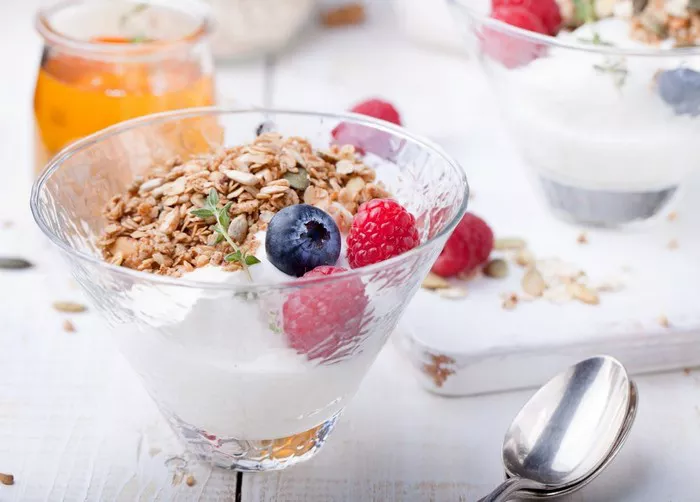Maintaining stable blood sugar levels is crucial for individuals with diabetes, and the first meal of the day plays a significant role in achieving this balance. A well-planned breakfast not only provides essential nutrients but also sets the tone for energy levels and blood glucose management throughout the day. This comprehensive guide explores the best breakfast options for diabetics, emphasizing foods that stabilize blood sugar, promote satiety, and support overall health.
Understanding Diabetes and the Importance of Breakfast
Diabetes is a chronic condition characterized by impaired insulin production or utilization, leading to elevated blood glucose levels. Type 1 diabetes involves an autoimmune response that destroys insulin-producing beta cells in the pancreas, requiring insulin therapy. Type 2 diabetes, the more common form, typically arises from insulin resistance and is often associated with obesity, sedentary lifestyle, and poor dietary habits.
Breakfast is vital for diabetics because it breaks the overnight fasting period, replenishes glucose stores, and provides the necessary energy for daily activities. Moreover, a nutritious breakfast can prevent mid-morning hunger, reduce the risk of overeating later in the day, and help maintain a healthy weight, which is critical for diabetes management.
Components of a Diabetic-Friendly Breakfast
An ideal diabetic breakfast should include a balance of macronutrients: carbohydrates, protein, and healthy fats. Additionally, it should be rich in fiber and low in added sugars and refined carbohydrates. Here’s a closer look at each component:
Carbohydrates: Choose Wisely
Carbohydrates have the most significant impact on blood glucose levels, so choosing the right type and amount is crucial. Opt for complex carbohydrates that are high in fiber and have a low glycemic index (GI). These carbohydrates are digested more slowly, resulting in a gradual rise in blood sugar levels.
- Whole Grains: Foods like oatmeal, quinoa, whole wheat bread, and barley are excellent choices. They are high in fiber and nutrients, promoting satiety and steady blood glucose levels.
- Fruits: Fresh fruits like berries, apples, and pears are low-GI options that provide vitamins, minerals, and antioxidants. Limit portions to control carbohydrate intake and avoid fruit juices which can spike blood sugar.
- Vegetables: Incorporating non-starchy vegetables such as spinach, kale, and tomatoes can add volume and nutrients without significantly affecting blood sugar levels.
Protein: Sustains Energy and Satiety
Protein is essential for muscle repair, hormone production, and overall body function. It also helps in slowing the absorption of carbohydrates, thereby moderating blood sugar spikes.
- Eggs: A versatile and nutrient-dense option, eggs can be boiled, scrambled, or made into omelets with vegetables. They provide high-quality protein and essential vitamins.
- Greek Yogurt: Unsweetened Greek yogurt is rich in protein and probiotics, which are beneficial for gut health. It can be paired with fruits and nuts for a balanced meal.
- Lean Meats: Options like turkey sausage, chicken, and lean cuts of pork can be included in moderation. They provide protein without excessive saturated fat.
- Plant-Based Proteins: Tofu, tempeh, and legumes such as lentils and chickpeas are excellent sources of protein for vegetarians and vegans.
Healthy Fats: Essential for Brain and Heart Health
Incorporating healthy fats into breakfast can enhance flavor, provide satiety, and support cardiovascular health, which is particularly important for diabetics.
- Nuts and Seeds: Almonds, walnuts, chia seeds, and flaxseeds are rich in omega-3 fatty acids, fiber, and protein. They can be added to cereals, yogurt, or smoothies.
- Avocado: A great source of monounsaturated fats, avocado can be spread on whole grain toast or added to smoothies and salads.
- Olive Oil: Using extra virgin olive oil in cooking or as a dressing provides healthy fats and antioxidants.
Fiber: Key to Blood Sugar Control
Fiber slows down digestion and glucose absorption, preventing rapid spikes in blood sugar. It also promotes digestive health and satiety.
- Whole Grains and Legumes: These are primary sources of dietary fiber. Including foods like whole grain bread, brown rice, lentils, and beans can significantly boost fiber intake.
- Fruits and Vegetables: Both are excellent sources of fiber. Aim for a variety of colors and types to ensure a broad range of nutrients.
- Nuts and Seeds: These not only provide healthy fats but also contribute to the daily fiber intake.
Foods to Avoid in a Diabetic Breakfast
While it’s important to know what to include in a diabetic-friendly breakfast, it’s equally crucial to understand what to avoid. Certain foods can cause rapid spikes in blood sugar levels and should be limited or avoided.
- Sugary Cereals and Pastries: These are often high in refined carbohydrates and sugars, leading to quick and significant increases in blood glucose.
- White Bread and Refined Grains: Unlike whole grains, these lack fiber and essential nutrients, causing blood sugar spikes.
- Sugary Drinks and Fruit Juices: These provide a high dose of sugar without the fiber found in whole fruits, leading to rapid blood glucose elevation.
- High-Fat Processed Meats: Bacon, sausage, and other processed meats are high in saturated fats and sodium, which can negatively impact heart health.
- Full-Fat Dairy Products: Opt for low-fat or non-fat dairy to reduce saturated fat intake, which is important for cardiovascular health.
Tips for Planning and Preparing Diabetic-Friendly Breakfasts
To ensure a consistent and healthy breakfast routine, consider the following tips:
Plan Ahead: Prepare breakfast items in advance to save time in the morning. Overnight oats, pre-chopped vegetables, and ready-to-blend smoothie packs can make mornings easier.
Read Labels: Pay attention to nutrition labels to avoid added sugars and refined grains. Look for high fiber content and low glycemic index ingredients.
Portion Control: Be mindful of portion sizes to manage carbohydrate intake effectively. Using smaller plates and measuring portions can help maintain appropriate serving sizes.
Experiment with Recipes: Variety is key to a sustainable diet. Experiment with different recipes and ingredients to keep breakfast interesting and nutritious.
Stay Hydrated: Drink water or unsweetened beverages like herbal tea with breakfast to stay hydrated and support overall health.
See also:Which Fruits Are Good For Diabetics To Eat?
Conclusion
A well-balanced breakfast is a cornerstone of effective diabetes management. By focusing on nutrient-dense foods that stabilize blood sugar levels, promote satiety, and support overall health, diabetics can start their day on the right foot. Incorporating whole grains, lean proteins, healthy fats, and fiber-rich fruits and vegetables into breakfast not only helps control blood glucose but also provides the energy needed for daily activities.
Remember, individual needs and preferences vary, so it’s essential to work with a healthcare provider or a registered dietitian to tailor breakfast choices to your specific health goals and lifestyle. With mindful planning and a focus on wholesome ingredients, diabetics can enjoy delicious and nutritious breakfasts that support long-term well-being.
Related topics:
Prediabetes Diet: How Many Carbs Should You Eat?

























